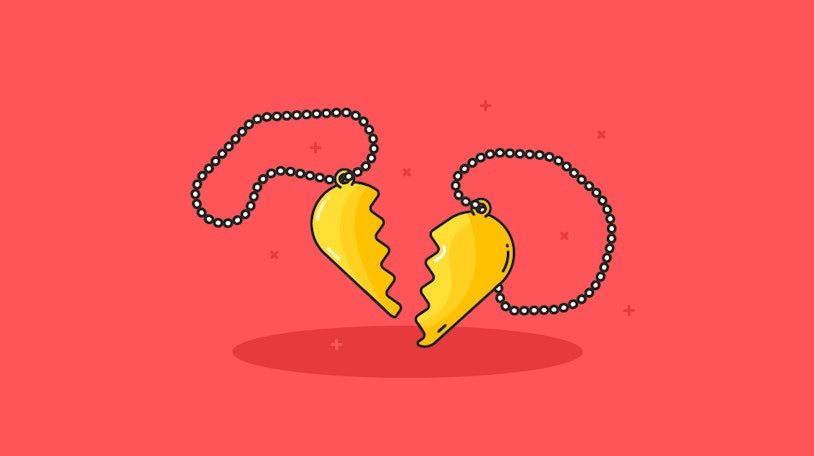Can you remember your toughest customer? Chances are, the experience involved some sweat, maybe some tears, and a few extra cups of coffee.
When you’re dealing with people, there’s no rulebook. A rational approach doesn’t necessarily evoke a rational response. Learning to tease out the nuances of interactions with difficult customers and untangle the right solution takes time, thoughtfulness and skill.
In the most extreme situations, though, firing a customer is the solution. But it’s one you have to leverage sparingly and discerningly to yield positive outcomes for your business. With a rigorous approach, you can save your company time, money and heartache in an otherwise impossible scenario.
The catch: There are no boilerplates for this big call, so we spoke to several experts to tap into their wisdom.
When to consider firing a customer
Firing a customer is a radical act, but there are times when it’s necessary to protect your team. With a measure so extreme, it’s important to clearly establish what merits a firing.
Challenging customer support interactions happen all the time; almost always, though, there’s a nugget of gold at the heart of a customer’s feedback and their experience of your product or service. The majority of these criticisms can contribute to valuable insights, whether they’re given constructively or not.
It’s a company’s job to separate the wheat from the chaff, or in our case, important feedback from plain old negativity.
When you fire a customer or client who’s giving you tough insights, you miss out on all that value — not to mention you’re setting a dangerous precedent. Michael Redbord, the General Manager of HubSpot’s Service Hub, cautions that firing should be an absolute last resort:
“In our world, ‘firing a customer’ refers to cases where we, the vendor, proactively introduce the concept of terminating the relationship to the customer due to extreme outlying circumstances not covered in our Terms of Service. There could be extreme cases of cost-of-goods-sold (COGS) overrun that you failed to predict, far outgrowing a solution so that it's best if a customer finds a new provider or a sufficiently awful working relationship with the humans of your company that warrants it. But these should be extreme cases that crop up rarely, and are statistical outliers by all measures!”
Here’s how to identify if your situation is the extreme exception to the rule of awesome support:
A customer is abusive or threatening
Examples:
A customer uses abusive language in their interactions with team members.
A customer threatens a customer support person with emotional blackmail, or issues threats of a smear campaign on review sites unless their demands are met.
A customer says they’ll prompt undue chargebacks.
Just as you wouldn’t tolerate slurs, curse words, and name-calling from team members, these toxic behaviors shouldn’t be tolerated from customers either. Mercer Smith explains that verbal abuse is the most cut and dry reason for firing a customer:
“If someone verbally accosts an employee or makes any suggestive or overly aggressive comments via email, usually, that merits a firing,” she says. “On occasion, we can issue a warning and then a firing, but usually it just comes straight to firing.”
Support teams can only thrive if they know leadership has their backs. It’s critically important for team members to feel safe at work, and it’s the employer’s job to protect workers from inhumane behavior.
In some terrible scenarios, customers also make threats to try to derail the company’s reputation with unfair or rampant reviews on sites like TrustRadius, Yelp or social media. These situations are less straightforward than verbal abuse, so they’re worth considering one by one.
If a relationship reaches that boiling point, it signals that the customer may not be open to more constructive avenues of support.
A customer is never, ever, ever happy
Examples:
A customer makes insistent and continuous support requests that have previously been addressed a number of times.
There’s a terrible customer-product fit that can’t be realistically remedied with workarounds, integrations, updates, or product changes within the needed time frame.
Whether a customer just can’t get what they need because of a poor product fit or they’re endlessly frustrated with your support team, firing is only an option when the customer exhibits repetitive, unceasing behavior. Are their complaints a daily pattern? “You can usually find ways to approach their needs or reframe their expectations that can work around firing,” says Smith-Looper.
Jason Pearson, Head of Product Support at Figma, agrees. He’s never had to fire an unhappy customer in his current role, but in a previous position, Pearson just couldn’t facilitate an alignment between the customer and the product:
“The customer became increasingly aggressive in their tone and was bombarding our support team daily. The team was spending an inordinate amount of time assisting this customer and they were causing a great deal of frustration for support as well as engineering.”
Pearson and his team exhausted every possible solution, and the engineering team worked around the clock to roll out new features. Unfortunately, the development timeline didn’t sync with the needs of the customer.
This kind of example — when a customer just can’t benefit from the product as-is — sometimes signals that it’s better to part ways.
How to fire a customer (the right way) in 5 steps
Once you establish that a customer’s behavior or the situation merits firing, there are some guidelines you want to follow to ensure that your team walks through the process with integrity. There are so many ways to approach the task, but these five steps can serve as building blocks for a thorough, fair experience all the way around.
1. Confirm you’ve exhausted other options
Knowing when it’s appropriate and how to fire a customer depends on a detailed record of every interaction. Set aside time to talk formally with anyone at the company who has been involved with the abusive or difficult customer.
Reread every support ticket, talk to account managers, and ask for formal written feedback from any support personnel who have corresponded with this customer during the course of the relationship — even if you’ve been hearing about it every day for months.
Take all this information and compile a detailed list of the customer’s complaints, the way that the customer made them (escalating in language or frequency), and how the team tried to resolve issues. With everything clearly in front of you, you can discern how the problem has unfolded and whether it’s an escalating pattern.
These details also give you the bulk of the information you need to take the issue to company leaders and explain the situation. The nitty-gritty details show that you’re taking complaints seriously and you’ve listened to and integrated the customer’s feedback as much as humanly possible.
2. Set up a time for a meeting of minds
Unless you’re a support leader making a clear-cut decision about a non-paying customer, you don’t want to make this choice alone. Colin Flanigan, Customer Support Manager at Pingboard, says the decision should include an account manager, one executive, and one support leader.
Because these situations are so rare and directly impact revenue, it’s better to bring more voices to the equation than stumble through firing a customer in a detrimental way.
Redbord says HubSpot elevates these rare situations to an executive team who digs into the issues to get to the root of the problem:
“When we have difficult situations they're handled on the phone or in-person, at the executive level, and we always do a ‘five whys’ and look at how we got into that situation, with an aim to fix the root cause and remediate the customer situation to the point where we don't fire them.”
HubSpot — and a lot of other SaaS companies — intentionally don’t build out a documented process for firing customers because they don’t want to normalize the action. If you have to fire a customer more than once in a blue moon, there’s a deeper product or business problem at play.
Ask yourself and your team: Is there anything else we can do to make this relationship work? If, in this exceptional circumstance, firing seems like the most beneficial option, it’s even more important to do due diligence and investigate the outcome.
For large contracts, you may want to consult a lawyer or your company’s general counsel to understand any legal implications.
3. Consider the potential financial gains or losses
When firing a customer or client, you also want to thoroughly assess the financial risks and benefits of the choice. Even though every situation is unique, there are some consistent factors at play.
For example, happy customers always spend more money than their unsatisfied counterparts. These joyful folks also cost a lot less to support, and they’re a lot more likely to refer your business to friends and colleagues.
Next, consider the possibility of issuing a partial or complete refund, even if it’s not required in your Terms of Service. The upside of this kind of generosity is clear: A refund helps bring the relationship to a close in a cordial manner, even if the customer was clearly in the wrong.
It also neutralizes some of the perceived loss for a client, buoying an otherwise bad experience and lowering levels of resentment. It’s a case-by-case scenario, but usually, some level of refund strikes a chord.
Given the likelihood that the customer took up a ton of your team’s resources, the operational gains (your team takes back its time) will most likely offset any revenue losses that occur when canceling a contract and offering a refund.
Plus, you’ll free up energy to pump toward customers who love your product. That will always yield financial benefits in the long run.
4. Pick the right person and channel to communicate the break-up
Ending a customer relationship is a big deal — it should be handled by leaders who have the experience and the confidence to deal with these exceptional circumstances. Take it up the chain — as Redbord says, “If you don't feel you can introduce sternness with ease, you're not the right person to fire a customer.”
Within that context, there are two schools of thought on the right channel a business should use to fire a customer:
Let go of a customer through the channel in which you receive their support inquiries.
Opt for the most personal method of communication: in-person, video chat or phone.
The first method may work for non-paying customers, but the level of consideration you bring to the process should align with the depth of the relationship and the financial commitment of the contract. An email from a support leader is awesome for detailing each issue the customer experienced — and that a solution isn’t plausible — but ending an expensive contract should always occur over the phone.
As Flanigan says, “Nobody likes to be broken up with via text, right?” The bigger the contract, the more important it is that a senior executive (or two) leads the calls. Again, escalating seniority of the people leading the conversation and the channel imbues the process with a level of seriousness that customers can respect.
5. Communicate with transparency, sincerity and firmness
All of these thoughtful steps lead up to the business of actually firing a customer. Regardless of the method you use to communicate the end of the relationship, you want to do it with strong boundaries and neutral language.
Lead with empathy and a firmness that scales with the circumstances. When you and a customer come to a mutual “break up” because it just isn’t the right fit, an appreciative, cordial tone is appropriate. When a customer is being abusive, you need to be stern, succinct and final.
Every situation requires a completely tailored approach. Here are some final words of wisdom from two of our experts on getting it right:
The clearest standard is honesty, sincerity and finality. Nobody should ever be happy about breaking up with a customer, so you can be honest about that — you should be honest about that. Practically speaking, avoid qualitative statements. Be purely objective. State facts and be brief.
If you're on the phone, speak calmly but less expressively than you might usually be. Be specific about what has happened, what will happen next, and their options for how to move forward.
Colin Flanigan
Customer Support Manager at Pingboard
It's incredibly important to tailor your communication to each person that you are talking to. You should not use a boilerplate template for firing a customer unless firing them over something like a Terms of Service violation.
Even then, there should still be a level of personalization — they are human, after all. Avoiding condescension and any heated language while clearly presenting the reasons that you are firing them is a good way to introduce sternness. Avoid words like ‘maybe’ or ‘possibly.’
Mercer Smith
Once you’ve mastered how to fire a customer, let it all go. You’ve done your best, made an exceptional decision in a trying circumstance, and communicated with clarity and strong boundaries. Now, you’re free to focus on the customers you love to serve every day. Make those interactions count, too!









